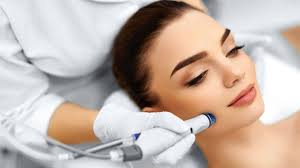The Role of Dermatologists in Skin Cancer Prevention
Skin cancer is one of the most common types of cancer worldwide, and its prevention heavily involves both individual awareness and professional care. Dermatologists play a significant role in reducing the risk of skin cancer by aiding detection, offering guidance on sun protection, and conducting necessary procedures to manage precancerous conditions. Dermatology expertise bridges the gap between skin health maintenance and the early identification of potential risks.
Detecting Cancer Early
Dermatology professionals specialize in identifying early signs of skin cancer through regular skin examinations. They can identify skin changes that may not be obvious to the untrained eye, such as changes in moles, discoloration, or unusual growths. Many dermatologists recommend routine skin checks, allowing for the detection of abnormalities that could develop into skin cancer over time.
Dermatologists use tools like dermatoscopes to closely evaluate the structure and pigmentation of moles and other lesions. These tools provide a magnified and illuminated view of the skin, which helps distinguish benign from potentially harmful growths. Since the early stages of melanoma and other skin cancers often present subtle symptoms, a dermatologist’s trained observations improve the likelihood of detecting and addressing these issues early.
Educating Patients
Dermatologists provide detailed education on reducing the risk of skin cancer by protecting the skin from harmful ultraviolet (UV) radiation. This guidance often includes strategies such as proper sunscreen use. They can also advise on choosing appropriate clothing for sun protection and identifying the best times to limit direct sun exposure.
Dermatologists also advise on behaviors that promote long-term skin health. They explain the importance of using a broad-spectrum sunscreen with a minimum SPF rating, its application frequency, and the areas of the body that are often neglected, like the ears, scalp, and feet. They also stress the benefits of seeking shade during peak sun intensity hours to minimize UV exposure further. This is particularly true for individuals with skin types that are more vulnerable to prolonged sun exposure damage.
Conducting Preventative Procedures
When dermatologists identify skin abnormalities that may pose a risk, they often conduct preventative procedures to manage these changes effectively. These include removing potentially precancerous lesions or performing biopsies. They use treatments such as cryotherapy to eliminate risk factors before they develop into cancer.
Precancerous conditions like actinic keratoses often arise from prolonged sun exposure. Treatment methods include cryosurgery, freezing abnormal cells, or topical medications promoting healthy skin cell turnover. These procedures not only manage the immediate concern but also minimize the chances of progression to full-blown skin cancer. Beyond in-office treatments, dermatologists may follow up with patients to monitor healing and help prevent future issues. This comprehensive approach helps reduce recurring risks and supports long-term skin health.
Find a Dermatology Clinic
Dermatologists play an integral role in skin cancer prevention by detecting early signs, educating patients on protective strategies, and conducting treatments to address potential risks. Their expertise provides a clinical advantage in recognizing and managing skin changes that could lead to skin cancer, ultimately supporting better health outcomes for individuals. Scheduling regular dermatology visits is strongly recommended for those looking to maintain their skin health and minimize potential risks. These consultations empower individuals with personalized advice and professional care for long-term skin protection.

